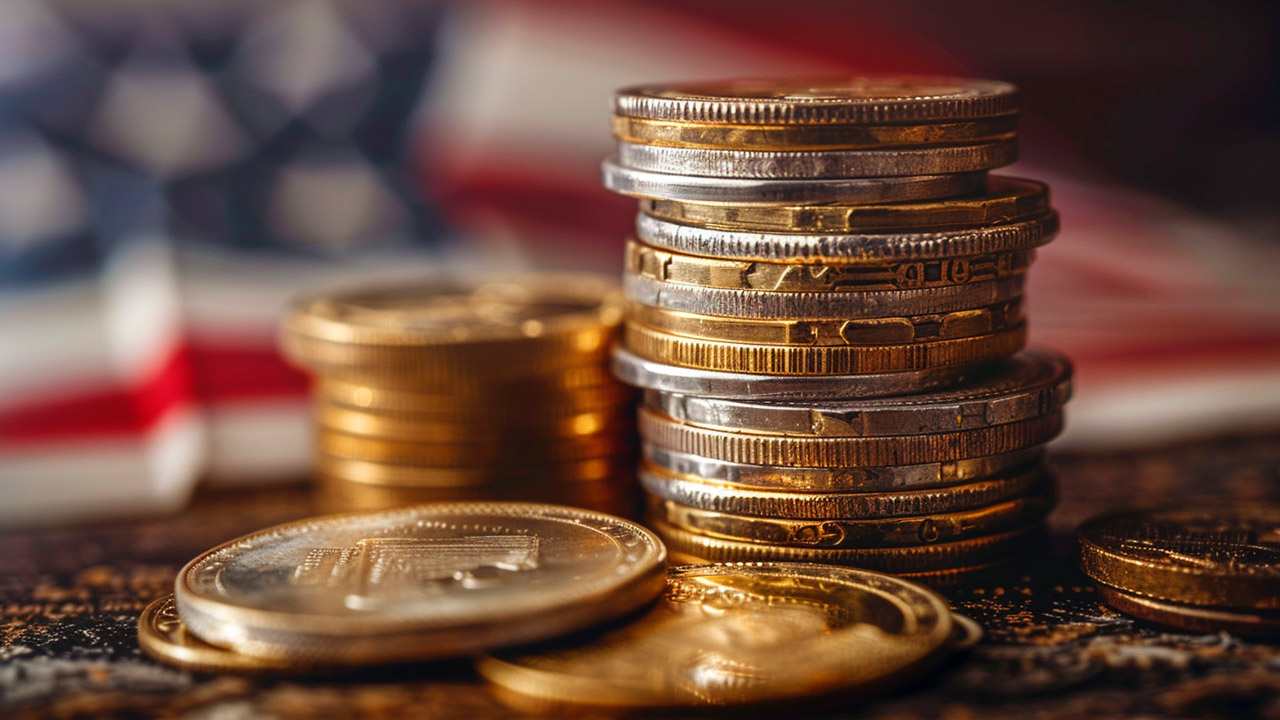The Copper Bull: Speculation vs. Fundamentals
Copper has gone mad: Liquidated shorts from a flood of speculators, an AI bubble, a supply crisis, and a renewable energy craze have all combined with high global inflation to recently send it to historic all-time highs. While I believe there will be major corrections as some of these factors come back down to earth, the most important one — out-of-control inflation — will ultimately send copper even higher in the longer-term.
Copper Futures (USD/lb) 6-Month
Yes, the market has taken on more froth than a Starbucks drink. Copper went high enough to wreck a batch of short sellers who betted that the party was over. The resulting short squeeze forced them to pony up, buying more paper copper to cover their positions and pushing prices even higher. Expect more volatility in the near-term, as the crowd of speculators looking to snatch short-term profits from copper are still here and will keep riding the wave.
That’s because the bullish action has been too juicy to resist, and it has enough fundamentals to support more upward action in the medium and longer-term. High inflation and a supply shortage are conspiring with increased demand for electric vehicles, a boom in renewable energy tech, and an AI bubble to keep the price going up even without the flood of speculative money.
I suspect a cooldown in a few factors driving the copper frenzy: first, I expect the AI market coming come back down to earth. In the longer-term, I also expect practical revisions of renewable energy targets like the impossible “Net Zero,” which are more about making politicians look good in the short-term than being pragmatic and achievable long-term goals. But the demand will still be there, and the current supply squeeze and inflationary pressures are here to stay. If you’re a buyer, waves of speculation along the way can provide buying opportunities for physical copper in the form of epic volatility and dramatic dips.
While the current narrative is that inflation is easing, any apparent relief from higher prices will be temporary. To avoid a banking and commercial real estate crisis, the Fed will have no choice but to cut interest rates at some point. This will invite a new torrent of inflationary expansion as the Fed ignores the pressure cooker that its policies helped create.
You can’t undo the effects of trillions’ worth of COVID money printing in just a few years or by briefly hiking interest rates to 4% or 5%. Taming that beast would require interest rates to be much higher than the Fed would ever raise them, as it knows that loan-dependent industries like real estate can’t survive with rates upwards of 8, 9, even 10%. The problem is worsened by sustained out-of-control budget deficits that are causing a confidence collapse in US Treasury bonds — in the “full faith and credit” of the US government.
When the Fed finally cuts rates, Americans spending devalued dollars will get slammed with higher prices for gas and food, along with surging commodities like copper and precious metals. Lower rates will also incentivize borrowing over saving for an already over-indebted population. It will encourage Americans to get in even more over their heads with loans they shouldn’t get to finance expenses they can’t afford, adding more upward price pressure for the goods they already don’t have enough money to buy.
It’s enough to make your head spin, and it can only possibly result in higher prices in the coming years — including for copper — even if the AI and renewables projections end up being only half what is currently predicted. That said, the broader renewable energy and AI trends are here to stay, and LLMs like ChatGPT require a lot more power than the internet’s current run-of-the-mill web searches:
A ChatGPT search requires 10x as much power as a traditional Google search pic.twitter.com/khdSbvxsOH
— zerohedge (@zerohedge) May 19, 2024
Copper supply woes will also continue throughout this year — and if you zoom out even more, interest rate cuts will all but guarantee higher prices even as shorter-term, speculation-fueled spikes and drawdowns cause the market to overheat.




 Source: tradingeconomics.com
Source: tradingeconomics.com
 While the efficiency of the free market is very often accepted in the realm of industry, the environment is often used as an example of the government’s necessary role in the economy. Public goods are used as an example of the problems with market allocation. Short-sighted business owners are apparently unable to see or account […]
While the efficiency of the free market is very often accepted in the realm of industry, the environment is often used as an example of the government’s necessary role in the economy. Public goods are used as an example of the problems with market allocation. Short-sighted business owners are apparently unable to see or account […] Inflation breeds desperation, and desperation breeds crime. As central banks in Europe and Canada cut interest rates, and expectations remain that the Fed will wait to cut until at least September if it cuts this year at all, our endlessly-wise global central bankers, the benevolent all-knowing stewards of the global economy, can’t seem to agree […]
Inflation breeds desperation, and desperation breeds crime. As central banks in Europe and Canada cut interest rates, and expectations remain that the Fed will wait to cut until at least September if it cuts this year at all, our endlessly-wise global central bankers, the benevolent all-knowing stewards of the global economy, can’t seem to agree […] Earlier this year, four states took steps toward strengthening sound money by lifting or reducing taxes faced by holders of physical gold and silver. Only a few months later, three other states have actually implemented new sound money policies, and by doing so, they have improved their citizens’ economic standing.
Earlier this year, four states took steps toward strengthening sound money by lifting or reducing taxes faced by holders of physical gold and silver. Only a few months later, three other states have actually implemented new sound money policies, and by doing so, they have improved their citizens’ economic standing. Public schools are losing students to charter education, and government officials are doing whatever they can to bail them out. On March 6th, Colorado House Bill 1363 was proposed. The legislation included several anti-charter school reforms, including decreasing funding and allowing public schools with declining enrollment to prohibit new charter schools within the district. However, […]
Public schools are losing students to charter education, and government officials are doing whatever they can to bail them out. On March 6th, Colorado House Bill 1363 was proposed. The legislation included several anti-charter school reforms, including decreasing funding and allowing public schools with declining enrollment to prohibit new charter schools within the district. However, […] The real estate market is responsible for anywhere from 20% to over 30% of China’s GDP (depending on who you ask). And with the latest meltdown that began with the implosion of Evergrande, the situation just keeps getting worse, inspiring a slew of government interventions beyond the scope of what would be possible in a […]
The real estate market is responsible for anywhere from 20% to over 30% of China’s GDP (depending on who you ask). And with the latest meltdown that began with the implosion of Evergrande, the situation just keeps getting worse, inspiring a slew of government interventions beyond the scope of what would be possible in a […]